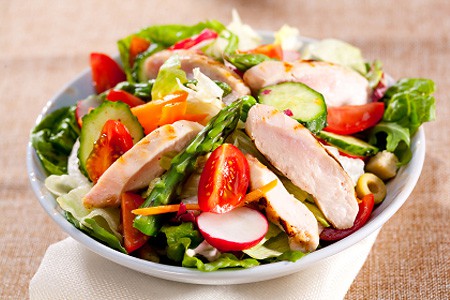Now that winter has come to an end and summer is approaching, it’s not just our clothing layers we need to shed as the days get warmer, we also need to shed our excess winter weight. – By Esmé Maré, Registered Dietician at Christine Peters & Associates
We gain or lose weight when energy intake and expenditure are out of balance. For example, when we consume a small amount of food and expend a high amount of energy, such as with running, we will promote weight-loss. When we consume a large amount of food and expend a small amount of energy, such as when we stay warm indoors, not wanting to exercise, then we will promote weight-gain. If we consume a moderate amount of food and expend a moderate amount of energy, then we will maintain our current weight.
Achieving a healthy body weight should be the aim of any weight-loss goal. A healthy body weight is a weight that promotes good eating habits, allows you to participate in regular physical activity such as running, and a weight that is acceptable to you and for your age. Here then are some tips on how to lose the weight you gained during winter, including how to do it healthily and how to keep it off whilst benefiting your running.
1. Set realistic Goals: An important part of any weight-loss plan is to set realistic goals. It can be frustrating making gradual changes to the body, but slower changes are much more effective in maintaining weight-loss over a longer period of time. This will also preserve your lean muscle mass needed for running. Remember, it takes time to adopt new eating habits. Aim for a weight loss of 0.5 to 1kg per week.
2. Never go shopping hungry: Plan your meals a week in advance. It’s easier to stick to a plan when you only have healthy food and drinks in your house.
3. Don’t starve yourself: Eat small, frequent meals every 2-3 hours to avoid feelings of food deprivation and to keep your metabolism going, and this will also ensure sustained energy levels. Starving yourself will slow down your metabolism and you will find it difficult to run on low energy levels.
4. Have Breakfast: Eat a healthy breakfast within an hour of waking up to jumpstart your metabolism and to promote weight-loss.
5. Plan your meals: Eat your meals and snacks only at set times in one location. Do not eat while studying, working, driving or when watching television. Don’t eat out of packets or take food straight from the fridge, rather dish up food onto a plate and eat with utensils. This will help you to keep track of how much you are eating and when you are feeling full.
6. Use smaller dishes: Eat your meals out of smaller dishes so they appear larger and you will eat less. The same can be done for drinks. Use a slender glass for all drinks except water.
7. Chew your food slowly: Aim to take at least 20 minutes to complete a full meal and stop immediately when you start feeling full. Store leftovers for your next meal.
8. Go for colour: To ensure that a variety of nutrients needed for a healthy body are consumed, half of your plate should be colourful vegetables or salad.
9. Choose good quality carbohydrates: Brown basmati rice, sweet potato, baby potatoes, quinoa, whole-wheat pasta, etc, should fill a quarter of your plate.
10. Choose good quality lean protein: Lean pork, beef, ostrich, chicken, legumes or fish should fill another quarter of your plate.
11. Cook with as little fat as possible: Remove excess skin and fat off meat and chicken before cooking.
12. Drink six to eight glasses of water daily: If you struggle to make this a habit, try drinking a glass of water before each meal and snack.
13. Get enough sleep: Remember to sleep at least seven to eight hours per night.
14. Reward yourself: When you do well with your nutritional programme, get a massage or buy yourself new clothes.
15. Prepare meals: Avoid purchasing high-fat, high-sugar foods by preparing healthy meals and snacks in advance.
16. Participate in regular physical activity: This will decrease body fat and help maintain or increase lean body mass.


